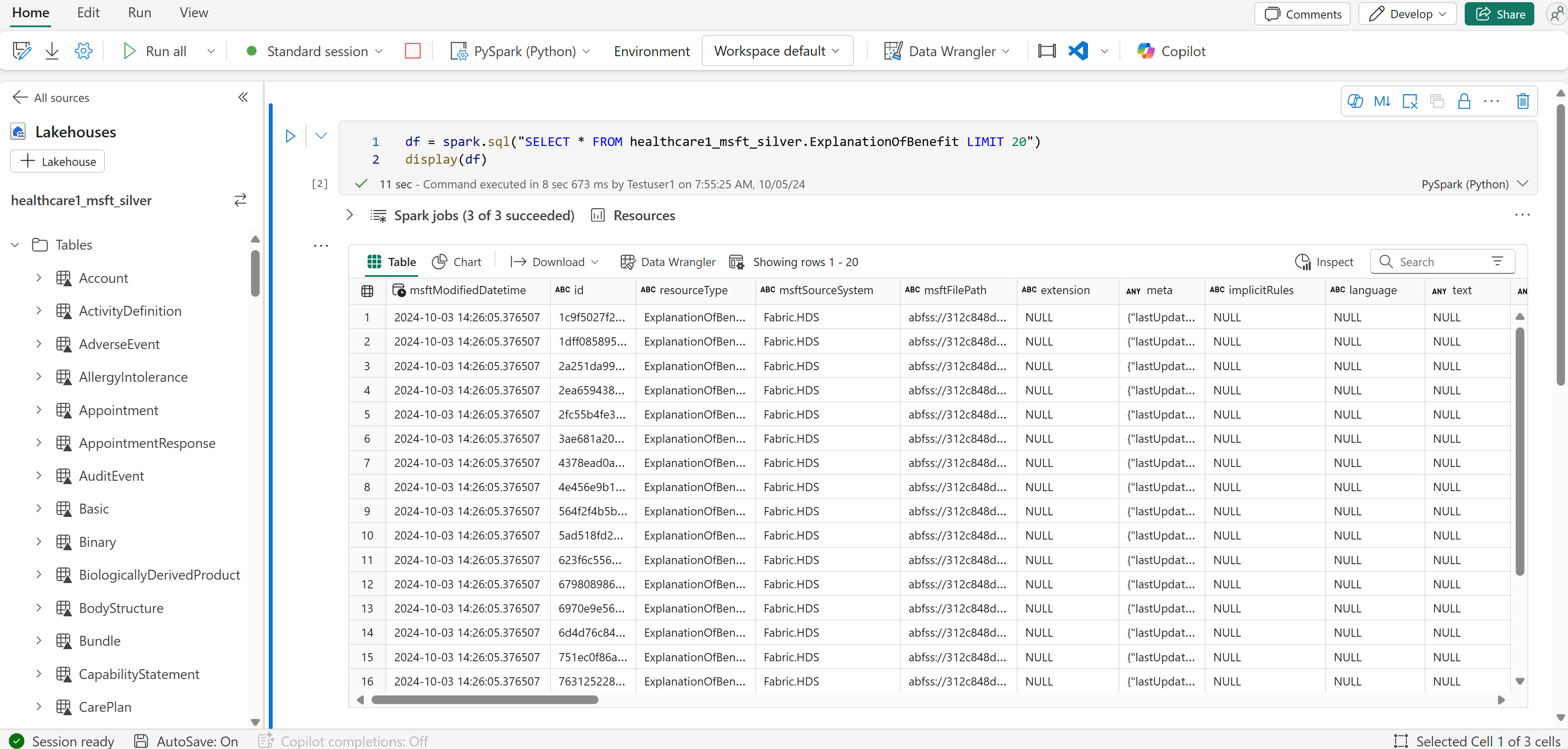医療データ ソリューションの CMS クレーム データ変換 (プレビュー) を使用する
[この記事はプレリリース ドキュメントであり、変更されることがあります。]
CMS クレーム データ変換 (プレビュー) を使用すると、クレーム データを CMS (Centers for Medicare & Medicaid Services) CCLF (Claim and Claim Line Feed) 形式で取り込み、保存、分析できます。 この機能の詳細と、その展開と構成の方法については、以下を参照してください:
変換メカニズムを理解する
クレーム データ変換パイプラインは、ネイティブ形式または圧縮形式のクレーム ファイルをレイクハウスに取り込みます。 エンドツーエンドの変換は、次の大まかな連続した手順に従います。
- OneLake でクレーム ファイルを変換する
- OneLake でクレーム ファイルを整理する
- クレーム データをブロンズ レイクハウスに抽出する
- クレーム データを FHIR NDJSON ファイルに変換する
- クレーム データをブロンズ レイクハウスの FHIR フラット化テーブルに変換する
- クレーム データをシルバー レイクハウスの FHIR リレーショナル テーブルに変換する
クレーム データ変換パイプラインを実行する
クレーム データ変換パイプラインを実行する前に、クレーム サンプル データを設定する の手順を完了していることを確認してください。
クレーム データをブロンズ レイクハウスからシルバー レイクハウスに変換するには、healthcare#_msft_clinical_claims_cclf_data_transformation データ パイプラインを開き、実行 を選択します。
パイプラインが正常に実行されたら、シルバー レイクハウスで ExplanationOfBenefit テーブルを開き、変換されたデータを表示します。
使用の考慮事項
CMS クレーム データの変換 (プレビュー) 機能を使用する前に、次の重要なポイント:を確認してください。
Spark のバージョン
ノートブックは、既定で Spark ランタイム バージョン 1.2 (Spark 3.4、Delta 2.4) で実行するように事前構成されています。 この設定は、必ず環境レベルで維持してください。 詳細については、Fabric ワークスペースで Spark ランタイム バージョンをリセットする を参照してください。
ファイル拡張子
アップロードする CCLF ファイルは、拡張子形式 *.T1000001 から *.T1000009 に従う必要があります。 拡張子が正しくないファイルは、ブロンズ レイクハウスの Failed フォルダーに移動します。
レコード長
CCLF ファイルのレコード長の不一致は、1 つ以上のレコードが必要な固定長形式から逸脱している場合に発生します。 この不一致により、データの不整合、不完全なデータキャプチャ、または処理エラーが発生する可能性があります。 想定した長さに満たないレコードを含むファイルは、ブロンズ レイクハウスの Failed フォルダーに移動します。

